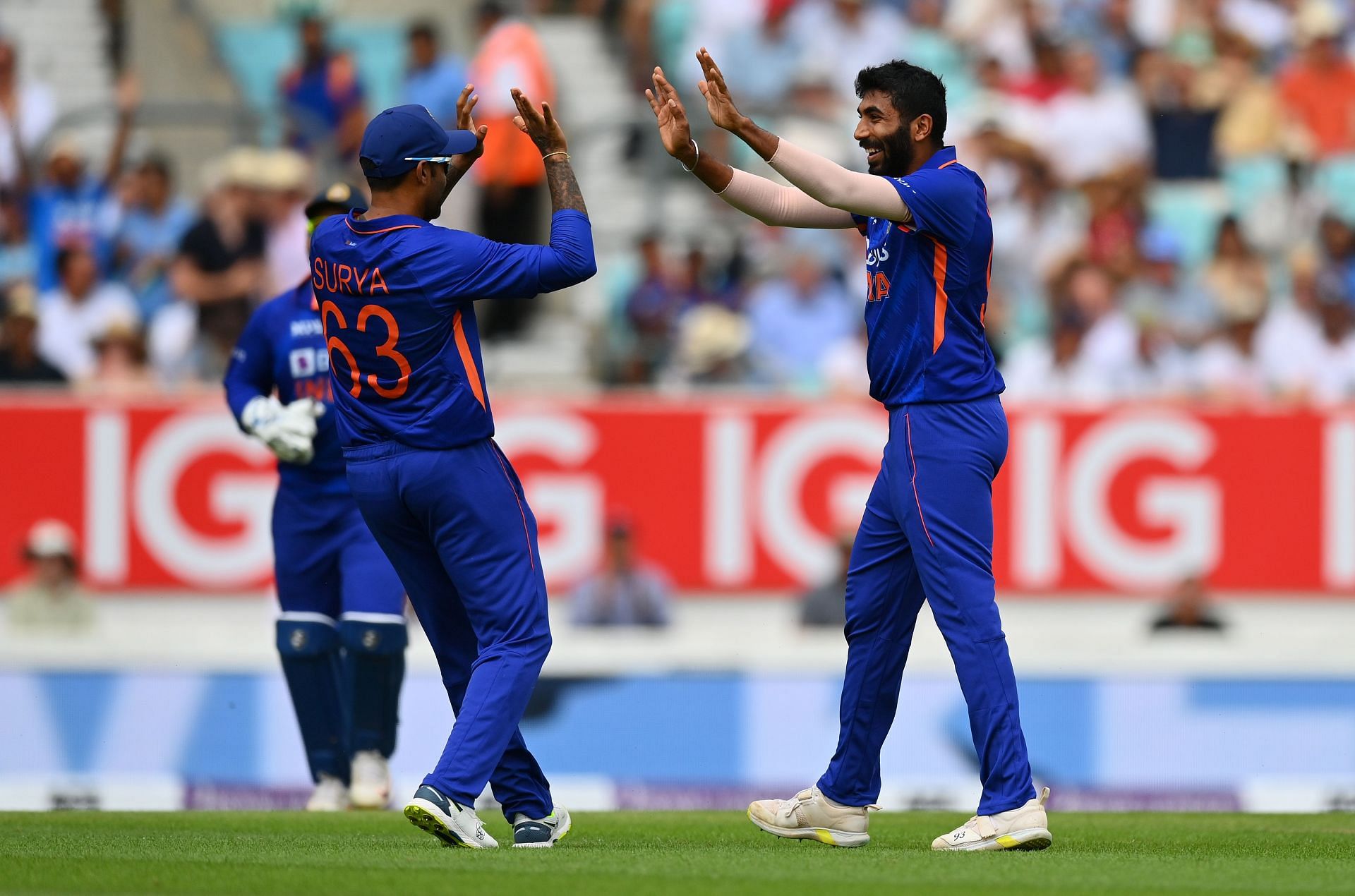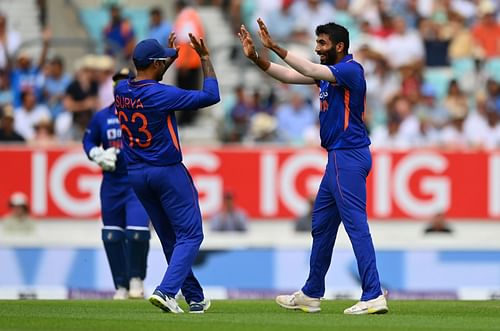
India's best ODI bowling attack is here to perform but they need to play a lot more together

Over the years, India have been synonymous with producing generation-defining batters in ODI cricket. Sachin Tendulkar was the gold standard for batting for a couple of decades before Virat Kohli took over that mantle during the 2010s. Virender Sehwag and Yuvraj Singh were also pioneers, and MS Dhoni is arguably the greatest finisher the white-ball game has ever seen.
Unsurprisingly, each of them generated enormous fanfare. Whenever someone talked cricket in India, it was about the glorious straight drives Sachin executed, the punchy cover-drives Kohli unfurled, the majestic sixes Sehwag and Yuvraj hit, and of course, the brute force Dhoni applied.
The flip-side, though, was that batting became the more glamourous and fashionable gig. It wasn’t because they’d done something wrong. It was, more or less, what it was. It’s not as if India didn’t produce extraordinary bowlers even when their batters dominated the headlines. It’s just that they were reduced to supporting acts – acts that often flew under the radar.
Not anymore.
In the past few years, India has morphed into one of the best, if not the best, ODI bowling unit on the planet. Much of it has been due to the revolution instigated by the IPL, wherein young kids let their hair down and just go searching for wickets. Bowling quick remains taxing but there are much greater rewards on offer, hence, the emergence of speed merchants of Umran Malik’s ilk.
The IPL has also fostered a fast-bowling culture in the country – one that has directly led to the development of Jasprit Bumrah, Mohammad Shami and several others. The best part is that they’ve not just dazzled intermittently. They’ve done it so often that it has become the norm – a norm that makes many batting units on the planet quiver.
Yuzvendra Chahal, another bowler who has challenged perceptions by bowling wrist-spin in an era of finger-spinners, has charted a similar trajectory. When he was making waves in the IPL in the mid-2010s, India were largely content to rely on Ravichandran Ashwin and Ravindra Jadeja. His performances, however, forced India to include him, and barring the odd aberration, Chahal hasn’t looked back.
Thus, when India arrived on English shores for the ODI series, there was a buzz around what the Men In Blue’s bowlers were capable of. This, lest we forget, was in the backdrop of England scoring nearly 500 in an ODI innings against the Netherlands.
But the question always revolved around whether they could repeat their heroics against India. Not just because the Men In Blue are much stronger than Netherlands. But also because they are arguably the gold standard when it comes to ODI bowling attacks.
There might be a few who might be wondering what the fuss is all about, considering Bumrah, Chahal and Shami have been around for more than half a decade now, and their displays haven’t suddenly peaked. So, here are some stats that prove why Bumrah, Chahal and Shami featuring together for India against England is, well, a pretty big deal.
As things stand, Shami (27.2) has the best strike-rate of all Indian bowlers to have picked up a minimum of 50 wickets in ODI cricket. Chahal (31.2) is third on that particular list – only behind Shami and Amit Mishra. Bumrah (31.4) is fourth and Kuldeep Yadav, who is currently nursing an injury, is fifth (32.3).
Bumrah, Chahal and Shami have not played together often for India in ODIs
So, there is a fair bit of evidence to suggest that this current bowling unit, at least in terms of incision and penetration, is as good as any to have represented India. The catch, though, is that Bumrah, Chahal and Shami have only played together eight times in ODI cricket – a number that seems remarkable considering how each of them has a stellar record.
Two of those, by the way, have come this series. At The Oval, Bumrah and Shami didn’t leave Chahal with much work to do. The pacers combined for five wickets in the powerplay and broke the back of the England batting line-up.
When the pair has featured alongside Chahal, their stats improve drastically too. Bumrah and Shami average 24.3 and 25.47 throughout their careers, respectively. When Chahal is in the side, that drops to 19.31 and 18.36, respectively. The strike rate is also extraordinary (23.1 for Bumrah and 19.4 for Shami), hinting that they keep picking up wickets at regular intervals.
That, in many ways, has been the difference between the two sides during this white-ball summer. India, because they have three genuine wicket-takers in the mix, have been able to peg England back on numerous occasions. At The Oval, the fast-bowlers kept chipping away, whereas at Lord’s, Chahal effected the crucial breakthroughs of Ben Stokes, Joe Root, Jonny Bairstow and Moeen Ali.
There might also be a temptation on the Men In Blue’s part to unleash Kuldeep in tandem. Till a year ago, that might not have felt very prudent. But now, with Hardik Pandya bowling and Jadeja capable of functioning as a specialist batter, Kuldeep could be a part of a three-pronged spin-attack.
In most conditions, that might not work. The next ODI World Cup, however, is in India, where the ball could turn, meaning that they could have as many as four exceptional wicket-taking options at their disposal.
Like most things, though, there are logistical issues to contend with. Days after the series against England ends, India travel to the Caribbean. They play 3 ODIs and 5 T20Is against the West Indies. Bumrah and Shami are not part of either squad. Chahal will play the ODI series and Kuldeep, subject to regaining his fitness, should be available for the T20I rubber.
So, there is no guarantee that they will feature regularly enough, or more frequently than they have done so far. But if pure numbers and stats are considered, it makes all the sense in the world to have them playing together as much as possible.
If that’s still not feasible for bilateral contests, the Men In Blue must ensure that they build for the ODI World Cup with this combination in mind. It’s almost as if this is the Galactico era of bowling for India. Fitting them, as it was for that famous Real Madrid team, could get difficult with loads of different commitments.
But India’s best ODI bowling attack ever is here to perform – perform to such an extent that people forget they have not been considered a bowling behemoth for a large chunk of their ODI existence. Thus, it is only fair that they are given the opportunity to carve out more of a niche for themselves.
It won’t be easy, as suggested earlier. But sometimes, the less easy endeavour is the right thing moving forward.